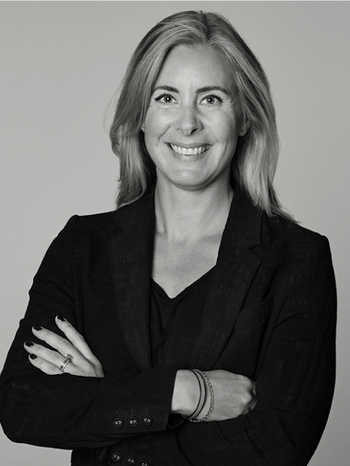Tony Cragg
"Hollow Column"
Signed Tony Cragg. Executed in 2006. Unique, in five different variations. Bronze on ironplate. Height 108 cm. Foundrymark Schmäke Düsseldorf. Podium 80 x 55 x 40 cm.
Provenance
Galleri Andersson/Sandström, Stockholm. Acquired in 2007.
More information
Tony Cragg is one of Britain's greatest living artists. His pieces are transcendent and captivating. They capture radical bodies that are at once both mathematic and corporeal. The role that Tony Cragg attaches to sculpture is precisely this: starting from an incessant and restless exploration of matter and its relationship with the environment that surrounds us, new meanings, dreams and languages emerge. "Hollow Column", presented here, from 2006, is an elegant example of the British artist's work. Despite being made from heavy bronze, Cragg imbues the sculpture with a softness and a sense of movement - the very contrasts that have informed much of his career.
In his early works, Cragg created accumulations of found/recycled objects, later applying the same stacking principles to thin layers of wood to form undulating organic structures. These works recall natural geological forms, such as the sedimentation of mineral particles or the weathering of rock by the forces of wind and water. His sculptures became more refined as he focused on specific materials such as fiberglass, steel, or stone. His works suggest the movement and transience of elements caught in the process of transformation, as in bronze or stainless steel forms that convey the fluidity of molten metal.
Cragg is an artists for whom the immaculate finish and refinery of his work only stands to heighten the power of its impression upon a spectator. "There is this idea that sculpture is static, or maybe even dead, but I feel absolutely contrary to that," Cragg has stated in a 2007 interview. "I'm not a religious person – I'm an absolute materialist – and for me material is exciting and ultimately sublime. When I'm involved in making sculpture, I'm looking for a system of belief or ethics in the material. I want that material to have a dynamic, to push and move and grow," (the artist in: Robert Ayers, 'The AI Interview: Tony Cragg', Art Info, 10 May 2007, online).
Cragg has been one of the world's foremost sculptors for more than three decades, bursting to prominence in 1988, the year in which he won both the Turner Prize and was selected to represent the UK at the Venice Biennale. His work has helped to define the three-dimensinal arts in museums and within the art market for the past quarter century. His profound engagement with sculpture has also served to influence subsequent generations of artists as a result of his roles as Professor at Ecole Nationale Superieure des Beaux Arts, Paris, France (1999-2009) and Professor at Kunstakademie, Dusseldorf, Germany (2009 to present). He has shown in many of the world's most prestigious and important museums and his works are in many of the world's major collections including the Tate London, MoMA New York, the Centre Georges Pompidou, Paris and many more.
Tony Cragg lives and works in Wuppertal in Germany. He also has a summer studio on the island of Tjörn, on the west coast of Sweden. In 2005, the Cragg Foundation was established, which runs the 25-acre sculpture park nearby Wuppertal and features roughly 40 outdoor sculptures both by Cragg as well as other artists including Henry Moore, Thomas Schütte, and Eva Hild.

















































































































